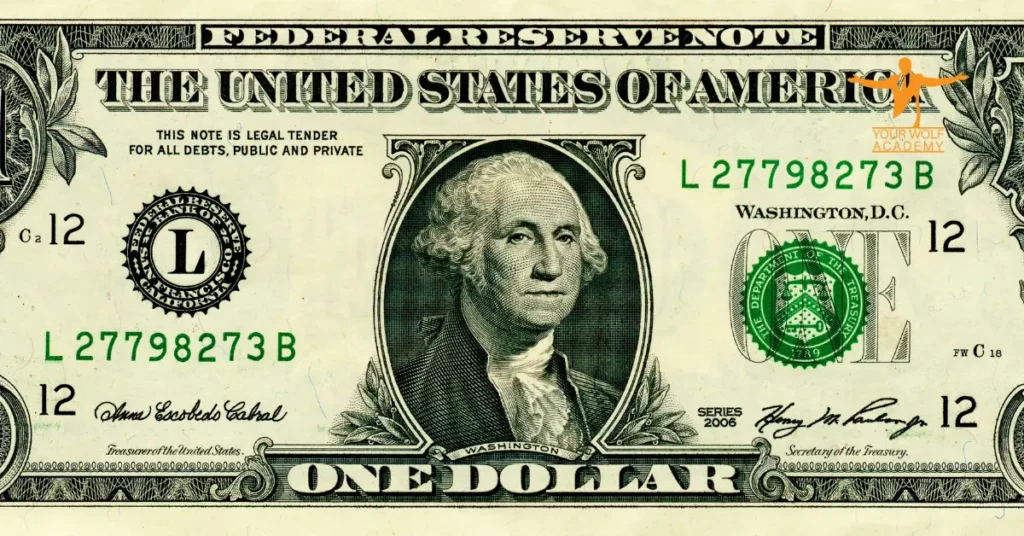The US dollar, also known as the Greenback, is the most widely traded currency in the world. It is the official currency of the United States and is used as a reserve currency by many other countries. The Greenback’s importance goes beyond its status as a medium of exchange.
It is a symbol of the economic and political power of the United States. In this article, we will provide a comprehensive guide to understanding the Greenback, its history, significance, and current state.
History of the Greenback
The Greenback was first introduced as a paper currency during the American Civil War. At the time, the US government needed a way to finance the war, and issuing paper money was a convenient solution.
The first Greenbacks were issued in 1862 and were not backed by gold or silver. This led to inflation, as people began to lose confidence in the currency’s value.
In 1879, the US government introduced the Gold Standard Act, which made the Greenback convertible into gold. This meant that the government was required to hold a certain amount of gold for every dollar in circulation. The Gold Standard Act helped stabilize the Greenback’s value and reduced inflation.
In 1913, the Federal Reserve System was established, giving the US government greater control over the Greenback’s supply and value. The Federal Reserve System is responsible for regulating the US economy by setting interest rates, controlling inflation, and managing the money supply.

Significance of the Greenback
The Greenback’s significance goes beyond its use as a medium of exchange. It is a symbol of the economic and political power of the United States. The US dollar is used as a reserve currency by many other countries, meaning that they hold US dollars as a way to store value and conduct international transactions. This gives the US a significant amount of influence in the global economy.
The Greenback is also used as a benchmark for commodity prices, particularly oil. The price of oil is often quoted in US dollars, and changes in the Greenback’s value can impact the price of oil and other commodities.
Factors that Impact the Greenback’s Value
The value of the Greenback is impacted by a variety of factors, including:
- Interest Rates: Higher interest rates can make the Greenback more attractive to investors, leading to an increase in demand and value.
- Inflation: High inflation can decrease the Greenback’s value, as people lose confidence in its purchasing power.
- Economic Growth: Strong economic growth can increase the Greenback’s value, as investors have greater confidence in the economy.
- Political Stability: Political instability can decrease the Greenback’s value, as investors seek safer investments.
- Trade Deficits: Trade deficits can decrease the Greenback’s value, as it suggests that the US is importing more than it is exporting, leading to a decrease in demand for the currency.
The Greenback in the Current Economic Climate
The Greenback has experienced significant fluctuations in value in recent years. In 2020, the COVID-19 pandemic led to a global economic downturn, which caused the value of the Greenback to decrease. However, in the second half of 2020, the Greenback experienced a rebound as investors sought safe havens in the midst of global uncertainty.
In 2021, the Greenback has continued to experience volatility. The US government’s response to the pandemic, including the fiscal stimulus packages and the Federal Reserve’s monetary policy decisions, have had a significant impact on the Greenback’s value.
In March 2021, the US government passed a $1.9 trillion stimulus package, which led to concerns about inflation and a decrease in the Greenback’s value. However, the Federal Reserve has signaled that it will maintain its accommodative monetary policy for the time being, which has helped to stabilize the Greenback’s value.
The Greenback’s role as a reserve currency has also been impacted by the rise of digital currencies, particularly Bitcoin. Some investors and countries are exploring the possibility of using digital currencies as an alternative to traditional currencies like the Greenback.

However, it remains to be seen whether digital currencies will be able to compete with the Greenback in terms of stability and security.
Conclusion
The Greenback is a symbol of the economic and political power of the United States. It is the most widely traded currency in the world and is used as a reserve currency by many other countries. The Greenback’s value is impacted by a variety of factors, including interest rates, inflation, economic growth, political stability, and trade deficits.
In recent years, the Greenback has experienced significant fluctuations in value, driven by factors such as the COVID-19 pandemic, fiscal stimulus packages, and the rise of digital currencies. Despite these challenges, the Greenback remains a cornerstone of the global economy, and its significance is unlikely to diminish anytime soon.
Your Wolf Academy offers a range of educational resources to help traders succeed, including free signals, technical analysis, and weekly webinars. Sign up today and get a recommendation for a regulated brokerage company that suits your needs.


